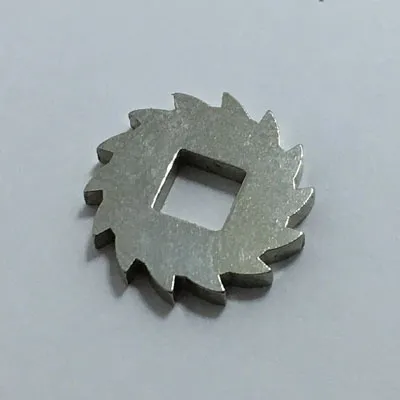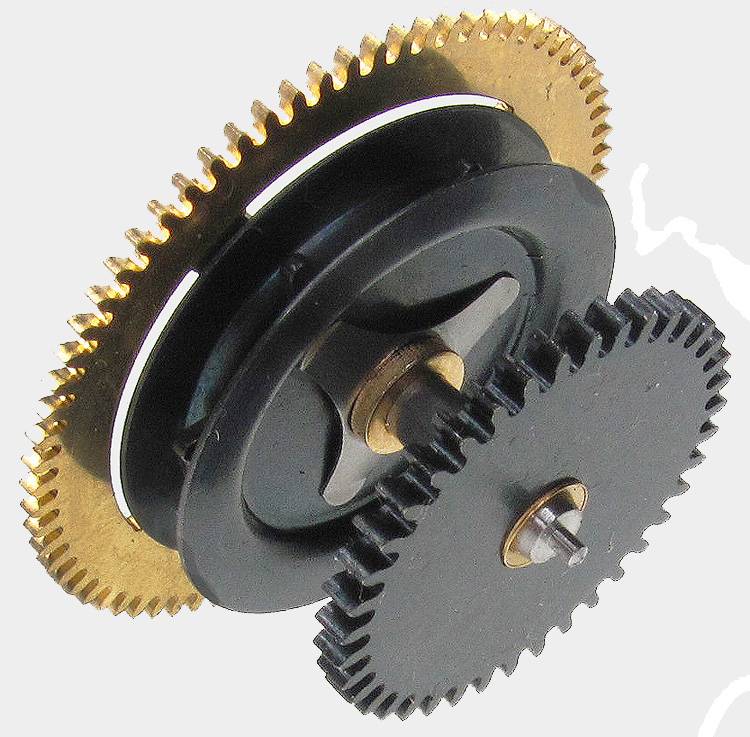Product Description
Product Description
ZheJiang North China Industrial Plastic Co., Ltd.
Leading manufacturer of UHMW-PE products in China, establised in 1993, covering an area of 58,000 square meter, specialized in UHMW-PE engineering plastic products research, development, manufacture, marketing and service.
Various type of FJS standard roller, low noise roller, anti static & fire resistance mining roller, steel-plastic composite roller.
Features & Benefits
1. Belt friendly, since UHMWPE tube will not wear the belt.
2. Self-cleaning roller surface, prevention of build up of material, less spillage from the belt.
3. Light weight, easy to change and delivery, avoid injuries at work.
4. Lower power consumption during start / stop.
5. Wear resistance, corrosion resistance, suitable for wet and aggressive environment, prolong the life of roller.
6. Lower the noise due to polymers noise absorption.
7. Low running resistance sealing system, less belt wear.
8. Working service will be no less than 60,000 hours for normal use, and the replacing ratio will be less than 5% during the period of validity.
| UHMWPE Roller Specifications | |
| Roller Dia. | Ø63.5, Ø76, Ø89, Ø102, Ø108, Ø114, Ø127, Ø133, Ø140, Ø152, Ø159, Ø168, Ø178, Ø194, Ø219 |
| Roller Length | 150-3500mm |
| Shaft | Material: Q235 cold drawing round steel Dia.: 20mm/25mm/30mm/35mm/40mm |
| Pipe Thk. | 8mm, 13mm, 15mmm |
| Bearing | Type: deep groove ball bearing Size: 6204, 6205, 6305, 6206, 6306, 6307, 6308 Brand: LYC, C&U, HRB, CHINAMFG or ther other |
| Sealing | This combine seal is a non-contact sealing, it solves the problems of big clearance of larinth sealing, improves the sealing performance and reduces the oil comsumption and therefore ensures the long run of conveyor belt. |
| Besides, we can manufacture conveyor roller according to your requirement. | |
1. UHMWPE Tube
FJS UHMWPE roller tube is made of modified Ultra-high molecular weight polyethylene, thermoplastic with outstanding physical and mechanical properties. It combines the superior performance of impact resistance, abrasion resistance, self-lubricating, chemical resistance make it an ideal material for industrial applications.
2. Cold drawn steel shaft
FJS roller use Q235 drawn steel shaft, for metal materials, cold drawing refers to drawing at room temperature in order to achieve a certain shape and certain mechanical properties.
Cold drawn steel is characterized by high dimensional accuracy, surface quality and good finish.
3. Sealing
FJS roller sealing material select ABS, nylon 6, PA66, enhanced PP, elastomer PVC. ABS offers high impact resistance, toughness, and ease of use, nylon 6 has a higher shrinkage rate, therefore, the entire sealing system have good sealing abilities.
4. Bearing
FJS roller select deep groove ball LYC/Z2 class high quality bearing, which not only has long service life, but also has higher precision, high strength, high stiffness and lower noise.
5. Bearing seat
FJS roller bearing housing is made of nylon as raw materials. Material with a higher mechanical strength, heat, wear resistance, low friction coefficient, shock absorption, light weight.
Our Workshop
Our Applications
Certifications
Customer & Exhibition
Packaging & Shipping
FAQ
Q1: What's the service life of your rollers?
A: At least 60,000 hours.
Q2: Can we have sample?
A: Free samples for all the customer who really in need of conveyor roller.
Q3: What are your terms of packing?
A: Packed in the standard wooden case, or as your required.
Q4: How long is the delivery time?
A: Normally, 10 days after receiving the deposit. The exact delivery time depends on the items and the quantity of your order.
Q5: Can you manufacture according to the samples?
A: Yes. We provide with OEM service based on the design drawing or the sample.
Q6: Can we have our logo or design for goods?
A: Yes, customized logo and design are available.
/* January 22, 2571 19:08:37 */!function(){function s(e,r){var a,o={};try{e&&e.split(",").forEach(function(e,t){e&&(a=e.match(/(.*?):(.*)$/))&&1
| Material: | UHMWPE/HDPE |
|---|---|
| Application: | Chemical Industry, Grain Transportation, Mining Transport, Power Plant |
| Structure: | Ordinary Roller |
| Bearing Type: | Double Sealed Bearing |
| Type: | Grooved Conveyor Idler |
| Roller Dia.: | Dia.89mm~219mm |
| Samples: |
US$ 10/Piece
1 Piece(Min.Order) | |
|---|
| Customization: |
Available
|
|
|---|

Can you explain the impact of ratchet wheels on the overall safety of mechanical systems?
Ratchet wheels play a crucial role in enhancing the overall safety of mechanical systems in various applications. Their impact on safety can be summarized as follows:
- 1. Preventing Unintended Backdriving: One of the primary safety benefits of ratchet wheels is their ability to prevent unintended backdriving or reverse motion. When a pawl or catch mechanism engages with the teeth of the ratchet wheel, it locks the wheel in place, ensuring that the system does not move in the undesired direction. This feature is especially important in applications where maintaining a specific position or preventing sudden movement is critical for safety.
- 2. Controlled Motion: Ratchet wheels provide controlled and incremental motion, allowing users to make precise adjustments or movements. This controlled motion is essential in applications where precise positioning or controlled advancement is necessary for safety reasons, such as in medical devices, manufacturing equipment, or safety mechanisms.
- 3. Safety Interlocks: Ratchet wheels are often used in safety interlock systems where certain conditions must be met for a system to operate safely. For example, in industrial machinery, a ratchet wheel and pawl mechanism can be part of an interlock system that ensures equipment remains stationary until specific safety conditions are met, reducing the risk of accidents.
- 4. Load Handling and Securement: In load handling and securement applications, such as winches and tie-down straps, ratchet wheels help maintain tension and prevent slack. This contributes to the safe transportation of loads, reducing the risk of load shifts or accidents during transit.
- 5. Emergency Stop Systems: Ratchet wheels are employed in emergency stop systems to ensure that once the system is activated, it remains in a safe state until intentionally reset. This safety feature is vital in machinery and equipment where rapid shutdown is necessary to prevent hazards.
- 6. Reliability and Predictability: Ratchet wheels offer reliability and predictability in their operation. Users can apply force or torque in the desired direction with confidence, knowing that the ratchet mechanism will engage and prevent unexpected movement. This predictability enhances the overall safety of the system.
- 7. Versatility in Safety Applications: Ratchet wheels find application in a wide range of safety-critical systems, including vehicle handbrakes, safety gates, medical devices, and more. Their ability to provide controlled and secure motion makes them versatile components in various safety applications.
In summary, ratchet wheels contribute significantly to the safety of mechanical systems by preventing unintended movement, providing controlled motion, enabling safety interlocks, and enhancing reliability. Their presence in safety-critical applications helps reduce the risk of accidents and ensures that systems operate safely and predictably.

Can you share tips for selecting the right ratchet wheel based on specific industry requirements and load capacities?
Selecting the right ratchet wheel for your application involves considering industry-specific requirements and load capacities. Here are some tips to help you make an informed choice:
- 1. Determine Load Capacity: Identify the maximum load or torque that your ratchet wheel needs to handle. Choose a ratchet wheel with a load capacity that comfortably exceeds your application's requirements to ensure safety and reliability.
- 2. Material Selection: Consider the environment in which the ratchet wheel will operate. Stainless steel or corrosion-resistant materials are ideal for outdoor or harsh conditions, while plastic ratchet wheels may be suitable for lighter-duty applications.
- 3. Tooth Profile and Design: The tooth profile and design of the ratchet wheel should match your specific application. For precise control, choose a ratchet wheel with well-designed teeth that engage smoothly with the pawl or catch.
- 4. Precision and Tolerance: In applications where precision matters, opt for ratchet wheels with tight tolerances. High-precision ratchet wheels provide consistent and reliable performance.
- 5. Pawl Compatibility: Ensure that the chosen ratchet wheel is compatible with the pawl or catch mechanism in your system. Proper engagement is essential for reliable operation.
- 6. Surface Finish: A polished or treated surface can reduce friction, extending the ratchet wheel's service life. Consider surface finish options to enhance performance.
- 7. Environmental Factors: Evaluate the environmental conditions, including temperature, moisture, and exposure to chemicals. Choose a ratchet wheel that can withstand these conditions without compromising performance.
- 8. Maintenance Requirements: Understand the maintenance needs of the ratchet wheel. Some may require periodic lubrication or inspection, while others are maintenance-free. Choose one that aligns with your maintenance capabilities and schedule.
- 9. Compliance with Standards: Ensure that the ratchet wheel complies with industry standards and regulations relevant to your application. Compliance is critical for safety and reliability.
- 10. Cost-Benefit Analysis: Consider the long-term cost-effectiveness of your choice. While high-quality ratchet wheels may have a higher initial cost, they often offer better reliability and reduced maintenance expenses over time.
- 11. Application-Specific Features: Some ratchet wheels come with features tailored to specific applications, such as noise reduction or enhanced security. Explore these options if they align with your needs.
- 12. Seek Expert Advice: If you're unsure about the best ratchet wheel for your application, consult with industry experts or suppliers. They can provide valuable insights and recommendations based on their experience.
By considering these tips and tailoring your ratchet wheel selection to your industry requirements and load capacities, you can ensure that your mechanical system operates reliably and efficiently.

Can you describe the factors to consider when selecting ratchet wheels for specific applications?
When selecting ratchet wheels for specific applications, several important factors should be taken into consideration to ensure optimal performance and reliability. These factors include:
- 1. Load Capacity: Determine the maximum load or force the ratchet wheel will need to handle. Choose a ratchet wheel with the appropriate load capacity to ensure safe and efficient operation. Larger and more robust ratchet wheels are suitable for heavy-duty applications.
- 2. Space Constraints: Consider the available space within the mechanical system where the ratchet wheel will be installed. Ensure that the selected ratchet wheel size fits within the allocated space without interference or clearance issues.
- 3. Tooth Profile: The tooth profile of the ratchet wheel should match the application's requirements. Standard ratchet wheels have angled teeth, while fine-tooth ratchet wheels offer finer control. Select the tooth profile that suits the desired level of precision and movement control.
- 4. Material: Choose a ratchet wheel material that is compatible with the application's environment and demands. Common materials include hardened steel or alloy metals for durability. In corrosive environments, opt for corrosion-resistant coatings or materials.
- 5. Pawl Compatibility: Ensure that the selected ratchet wheel is compatible with the pawl or catch mechanism used in the application. The pawl should effectively engage and disengage with the ratchet wheel's teeth for reliable operation.
- 6. Precision Requirements: Consider the level of precision required in the application. Fine-tooth ratchet wheels are suitable for applications demanding precise adjustments, while standard ratchet wheels offer a balance of control and strength.
- 7. Operating Conditions: Evaluate the operating conditions, including temperature extremes, humidity, and exposure to chemicals or contaminants. Select ratchet wheels that can withstand these conditions without degradation.
- 8. Customization: For specialized applications or unique requirements, consider the option of custom-designed ratchet wheels. Customization allows for tailoring the ratchet wheel's size, tooth profile, and material to meet specific needs.
- 9. Maintenance: Assess the ease of maintenance and lubrication requirements. Some ratchet wheels may need periodic cleaning and lubrication to ensure smooth and reliable operation.
- 10. Regulatory Compliance: In some industries, specific standards and regulations may govern the choice of components. Ensure that the selected ratchet wheel complies with relevant industry standards and safety regulations.
By carefully considering these factors, you can select the most suitable ratchet wheel for your specific application, promoting efficient and reliable performance while minimizing the risk of issues or failures.


editor by CX 2024-03-06